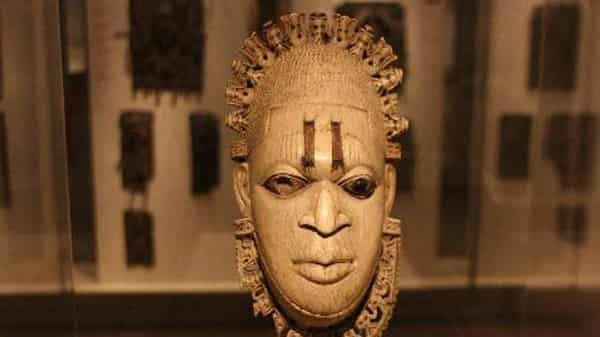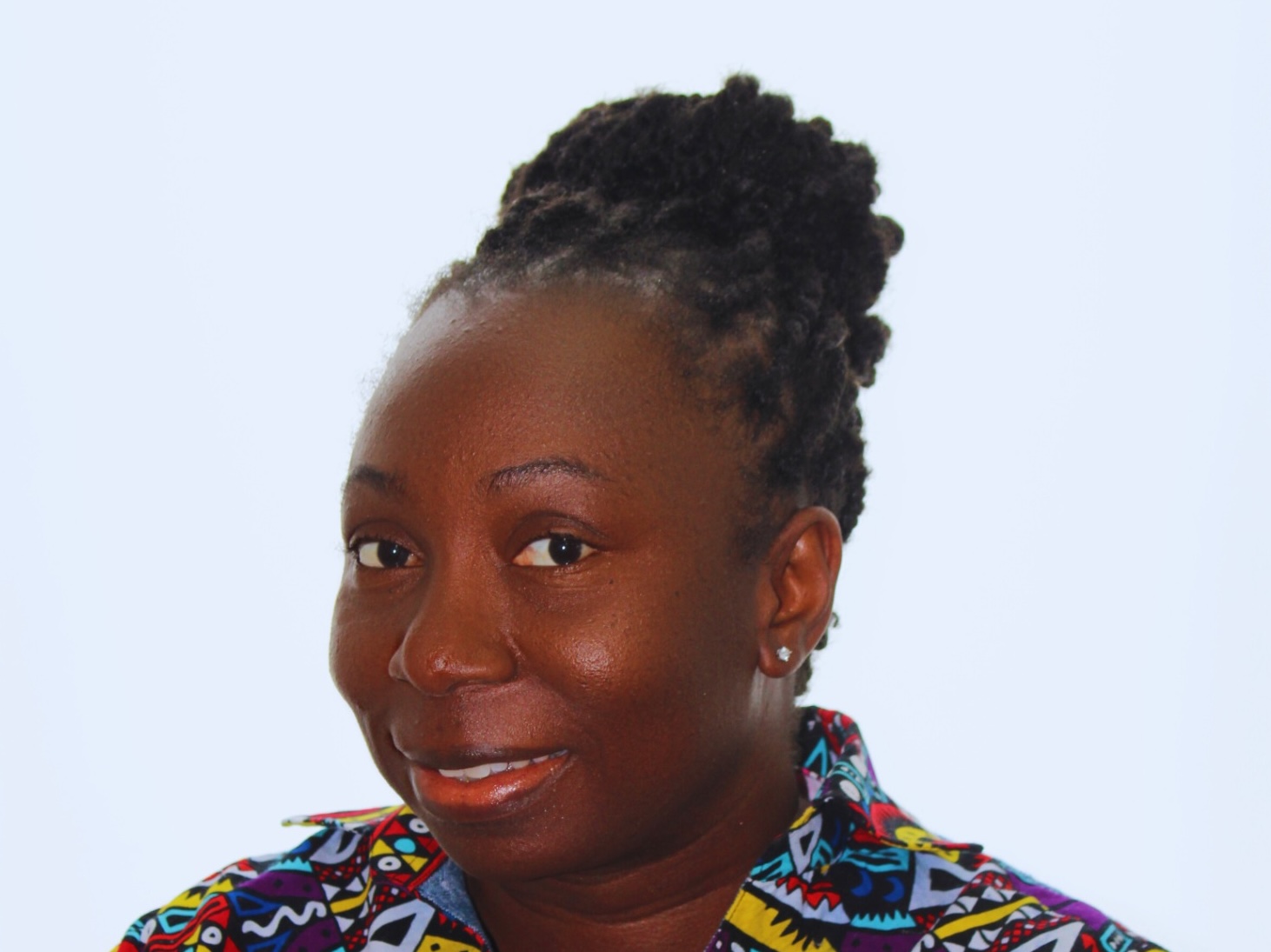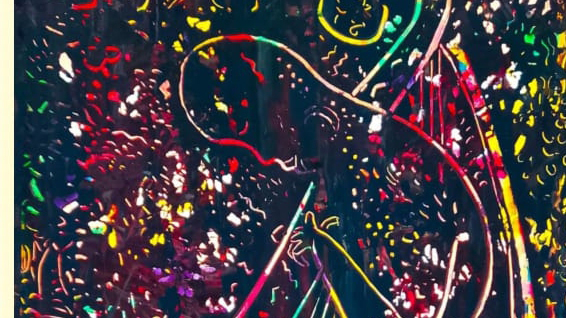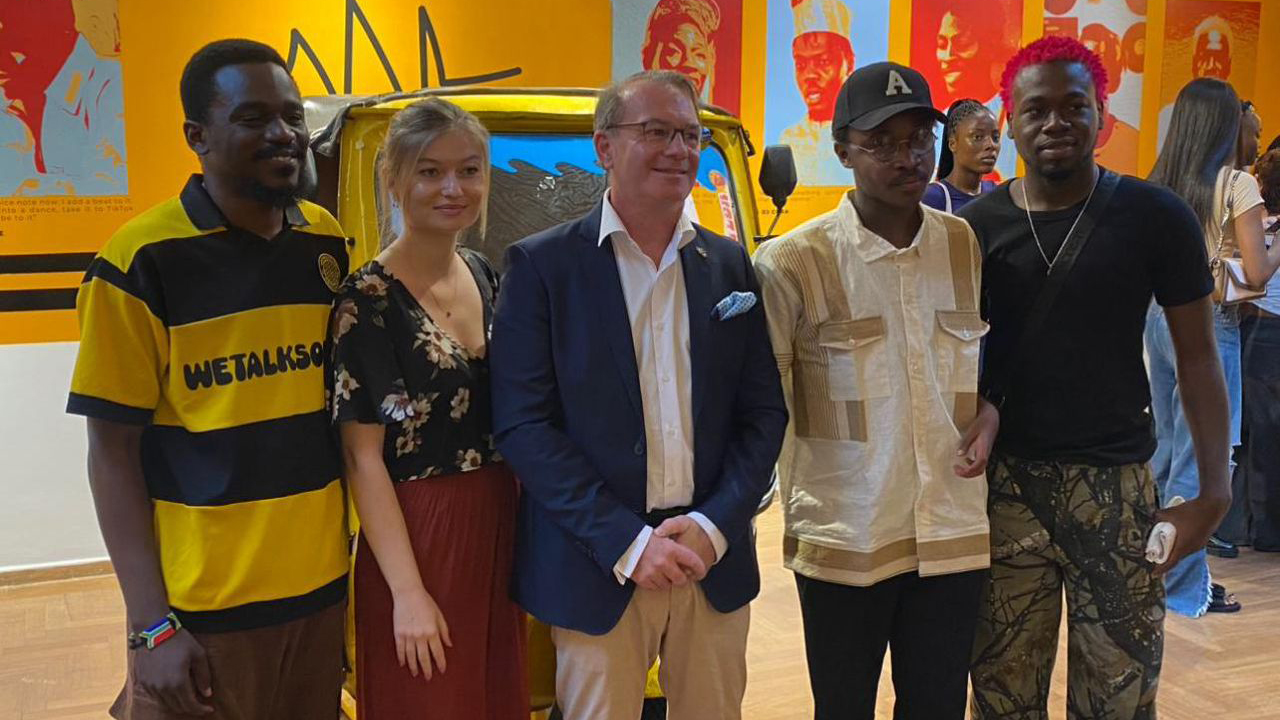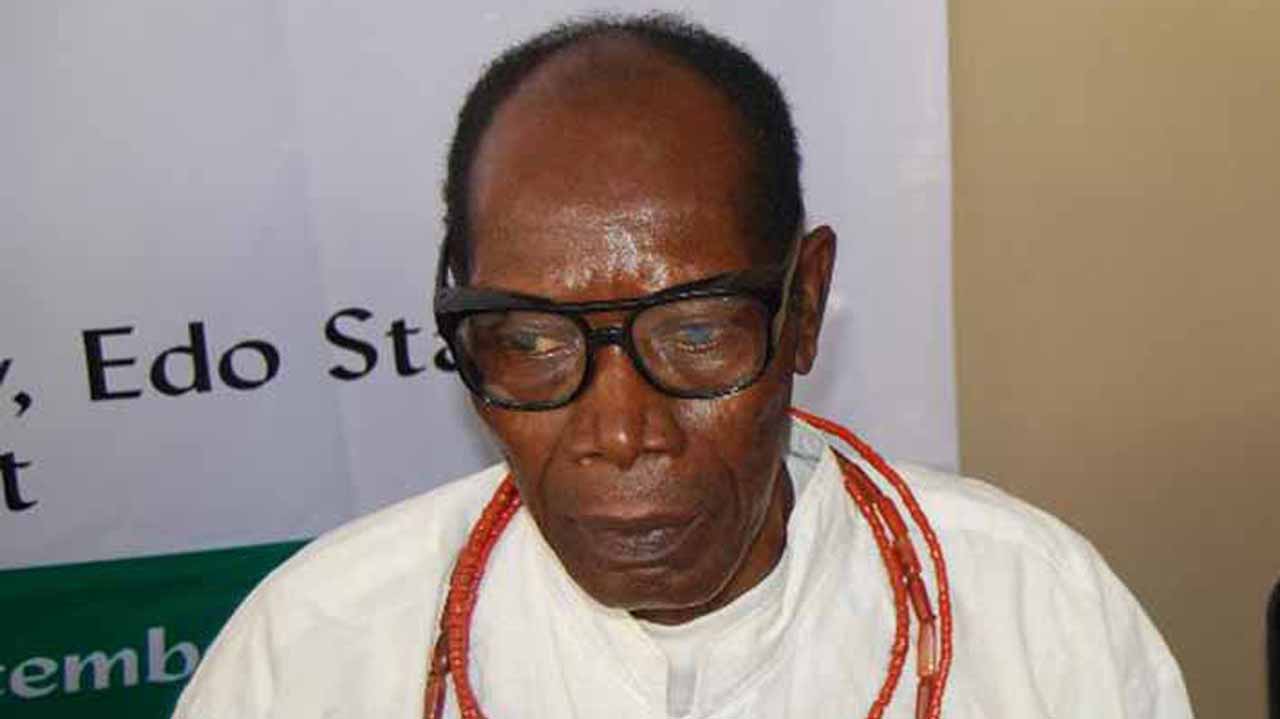
On Thursday, December 11, 2019, the National Gallery of Art (NGA) opened an exhibition in honour of Pa Joseph Alufa Igbinovia, the carver of FESTAC ’77 mask, Queen Idia. Themed, FESTAC ’77, Unmasking the unsung hero, the event, which held in Benin City, Edo State also saw the presentation of a book on Alufa. In this interview with GREGORY AUSTIN NWAKUNOR, he talked about his art and his frustrations since he carved the FESTAC mask.
Joseph Alufa Igbinovia is not a celebrity, who will glide through crowds of tourists and local revelers astride an elaborate float of the Edo regalia. He is one of the artists who will rather concentrate on their work than make noise about themselves. He believes that his work should speak for him. He is a simple, silent worker and one of the standard-bearers of a unique Benin guild tradition.
Standard-bearer. Yes, standard-bearer.
But strangely, he is not among those Dr. Simon Ikpakronyi, Acting Director General, National Gallery of Art (NGA), describes as “popular modern Benin artists” such as Osagie Osifo, Ben Aye, Ben Osawe, Erhabor Emokpae, Felix Idubor, Festus Idehen, Ovia Isah, Robert Odiaseh, Rowland Ogiamien and Amos Odion.
Some of these artists, who emerged in the 1960s, Ikpakronyi reveals, had their training in Nigerian universities, some overseas, after which they set up studios, mostly in Lagos, where they practised and trained others. “They earned international reputation and received commissions from public and private patrons, art galleries, brokers, architects, universities and so on. Many of them hailed from traditional backgrounds and were original souvenir carvers who later achieved international recognition, especially for their carved wood doors for government and private organisations.”
Alufa is not part of this group. He does not even have the fame these people command. He is a solo worker. However, the downside of this is that, by detaching from the public, he is only known by very few people in his circle.
Ikpakronyi confesses, “it is so difficult getting information in the public space either through books, newspapers or online on the carver of the replica of FESTAC ’77 symbol.”
For its recent documentation, NGA had to dig deep in order to discover a treasure trove of other important works in private and public collections done by Alufa.
But he is a master artist. He is a hero in his own right: An unsung hero!
An unsung hero with a national award of Member of the Order of the Niger (MON)? You wonder.
Well, his story is that of MON, without an accompanying EY, money. It is the story of a man, who feels betrayed, exploited and abandoned.
Most days, this 70-year-old man is a sculptor, carpenter, welder and carver. At the oba’s palace, he is a chief and one of the celebrated carvers in the land. He is a member of Iwebo Palace Society. Iwebo was established by the Oba of Benin for grooming those that want to become chiefs in the kingdom, as well as those who provide services such as carvers, bronze casters and iron potters. The head of the carvers is known as Ukoniwebo.
Alufa is an Ukoniwebo. A status he attained during the reign of Omo N’Oba N’Edo Uku Akpolokpo, Oba Erediauwa, Oba of Benin Kingdom after many years of dedicated service to the Oba.
Ogun is his patron saint. But his last exhibition does not eulogise the god of iron, whose creative essence is venerated.
He says his journey, ironically, started from Christianity. When he was in Port Harcourt, he was attending Apostolic Faith Church but through what he felt was a vision, he left for Benin, especially when his health began to fail.
“It still amazes me,” he says.
In Benin, he briefly worshipped at Celestial Church of Christ, then withdrew before he found solace in Ogun worship.
“I became an Ogun priest, traditional religionist. I’m fully a God sent priest of Ogun from heaven otherwise, the Ogun would not come to me in the night, wake me from sleep and move me here and there,” he mumbles.
This afternoon, he is dressed in a white ceremonial costume, with the royal Ada woven into the cloth. His moon circle hair, which is an indication of his role in the oba’s palace, is fast receding.
He pauses as if he is set to stab a needle through a mosaic of beads and canvas.
Alufa is the son of parents who were not artists. His father was a farmer, while his mother was a trader. His grandfather, however, on his mother side, was an artist.
“Yes, I got the gene from him,” he says, excitedly.
He was born on January 1, 1949 to parents who hailed from Ayen Village in Uhunde Council of Edo State. His father was Igbinovia Obayagbonna Noweko, son of Obayagbonna. While his mother was Atiti, the daughter of Ehiobo of Igumukua in Orhionmwon Council of Edo State.
Igbinovia’s father, Igbinovia, had many wives and children. His mother was the fourth. Alufa was the eight of his father and second of his mother’s. His father died in 1957, when he was barely nine years, and thus, began a world of struggle.
After primary school, he went into apprenticeship to learn carving in 1967. He had his training at the studio of Samson Okungbowa on Igbesanmwan Street, Benin.
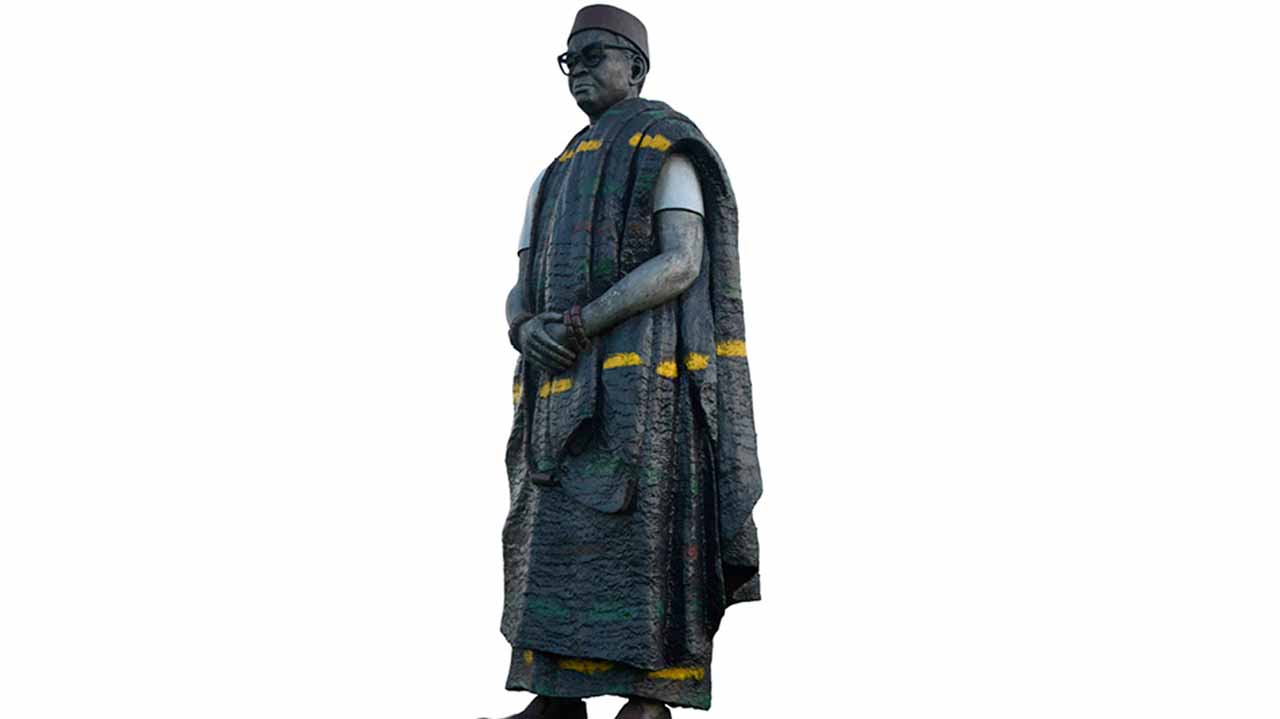
Seeing his skill as an apprentice, Alufa was so much liked by the chiefs to the extent that anytime they had commissioned works, either in the palace or any other place, he was taken along.
“Art is my blood, my life and my power,” says Alufa, “if I close my eyes, I see different artworks. If I am looking at a wall, I just see different artworks. God gave me the inspiration to invent art works, I don’t copy.”
Surprisingly, Alufa is not from Igbesanmwan, the known carving community of Benin. He just went there for apprenticeship. Before he got there, his master, Samson Okungbowa, already had four apprentices. The senior had spent three years and some months, the second was just doing two years and a fraction of months. The third had spent a year plus, while the fourth had just spent a year. But in less than three months, he had mastered the job more than all of them and was even teaching some of them.
“My master said I did not come to learn, but to teach the people. So, I’m a naturally talented artist,” he says. “Nobody taught me how to draw or do sculptural pieces.”
Alufa expresses himself in all genres of visual arts: drawing, sculpting, carving and any medium so desired. But now, The pace of his work has slowed down, and he leaves a lot of work for his children to do, only appearing for the finishings.
“I no longer work unless my son and some of my boys that I direct, but it cannot be like when I do it myself,” he admits. By 1976, he was already a mature artist. He had carved two works, Imedumiran, and Olokun Obaramen, a 7-ft high work, which established him as a master carver. These two works brought him fame that actually drew him closer to the dream carving: Queen Idia mask — The symbol of Second World Black and African Festival of Arts and Culture, FESTAC ‘77.
Alufa says apart from the national honour given to him, government has not bothered about his welfare. His case is similar to that of Akinwunmi Taiwo, who designed the national flag.
For a very long time, nothing was done to assist Akinwunmi until former President Goodluck Ebele Jonathan awarded him a national honour, Officer of the Federal Republic (OFR), in 2014, and made him honorary life presidential adviser on N500,000 monthly salary.
“I was glad when I heard about the gesture by Jonathan. My own case is the same. The Federal Government should do something for me,” he laments.
“Through this exhibition, people will help to encourage government not to abandon me. For 42 years now, I’ve been suffering. The house I started building in 1981, I have abandoned it because of money. Government should come to my aid,” he says, soberly.
He has done a lot of jobs, especially for Chief David Edebiri, the Esogban of Benin; Chief Obasogie, the Ogbewe N’igun Ugnoja; Dr. Rama’s Okoye Azuzu and a lot of people that flit in and out of his memory like flies through a hole in a screen door.
According to Edebiri, “Alufa is a big time artist. He has produced many artworks but he has nothing to show for it by way of accomplishments. I visited his house and it was a show of shame that a man who was given national honour by the Nigerian government for a noble deed should be living in that type of environment.”
But the Minister of Information and Culture, Alhaji Lai Mohammed, believes that the government is beginning a process of change in the celebration of Nigerian heroes.
While saying the nation is grateful to Alufa for his patriotic zeal, the minister, who was represented at the exhibition by the Director, General Services, Mr. Augustine Eta, points out,”you are one of the heroes of Nigeria worth celebrating. Often times, the nation forgets its real heroes. This administration is poised to change all that. The fact that an agency of the Federal Government of Nigeria, the National Gallery of Art is today exhibiting your artworks and unveiling a publication on your life and works is a testimony that the President Muhammadu Buhari administration will not forget those that did and are still doing the country proud at one point or the other.”
He commended Alufa for rising up to the occasion when the country needed him. The minister wondered what would have happened if he did not come up with a convincing replica of our revered Queen Idia mask, which was the official insignia of FESTAC ’77, when the British stoutly refused to release the original mask in their museum in London.
According to Ikpakronyi, “this is the first time NGA is documenting an informally trained artist. It goes to show how Joseph Alufa lgbinovia has transformed from a craftsman to a well-honed artist.”
So far, master artists documented by NGA include: Aina Onabolu, Ben Enwonwu, Timothy Adebanjo Fasuyi, Yusuf Grillo, Uche Okeke, Jimo Akolo and Demas Nwoko. By this publication, Joseph Alufa lgbinovia joins the pantheon of master artists!
While assuring that NGA will continue to execute more programmes to promote the practice of visual art in Nigeria and to empower artists, the Chairman of NGA’s Governing Board, Ambassador Umaru Azores Sulaiman, pleaded with the minister to help in the desire of the gallery to have an edifice for its artworks. “This will ensure a permanent home for its many collections and a space to host permanent and temporary exhibitions.”
Sulaiman said, “the edifice would attract local and international tourists who will pay minimal amounts to view the works. This is another way of generating income for the government. I believe getting a befitting structure for the National Gallery of Art should be pursued with the same vigour as that of repatriating our artefacts abroad.”

